Silvers from the Regolini Galassi Tomb
Artist: Unknown
Date: 675-650 B.C
Classification: Artifact
Dimensions: Various
Materials: gilded silver, silver, silver foil
Description
HIGH PRIORITY PROJECT
In 1836 Archpriest Alessandro Regolini and General Vincenzo Galassi discovered one of the richest and most famously decorated Etruscan tombs. It is from the “Oriental’’ Period found in the Sorbo Necropolis of ancient Caere (today Cerveteri). The main burial area was for an interred woman with affluent clothing and fine jewelry. In addition to intact materials, countless fragments pertaining to silver vessels and ornaments were inside the tomb, and they have not undergone studies. The selection and restoration of these fragments will lead to the identification of new objects and the reassembly of at least a pair of silver foil bracelets embossed with geometric and abstract motifs.
TOTAL COST: € 23.182,26 ($ 22,658.34)
Restoration Procedures
-
Handling of the works
-
Photographic filming by the restorer of all phases of the work
-
Cleaning
-
Consolidation, search for attachments with other fragments kept in storage
-
Integrations, final protection
-
Design of new exhibition supports
Detail
Patrons:
Hazelwood Family
Inventory N°: 20471, 22216, 22217, 22218, 22219, 22220, 22221, 20477, 20481, 20485, 20488, 20493
Artist: Unknown
Date: 675-650 B.C
Provenience: Cerveteri, Latium Region - Italy
Dimensions: Various
Materials: gilded silver, silver, silver foil
Department:
Etruscan - Italic AntiquitiesCurators:
Dr. Maurizio Sannibalemuseum:
Gregorian Etruscan MuseumLaboratories:
Metals & CeramicsWishbook year: 2023
Silvers from the Regolini Galassi Tomb - Final Restoration Report
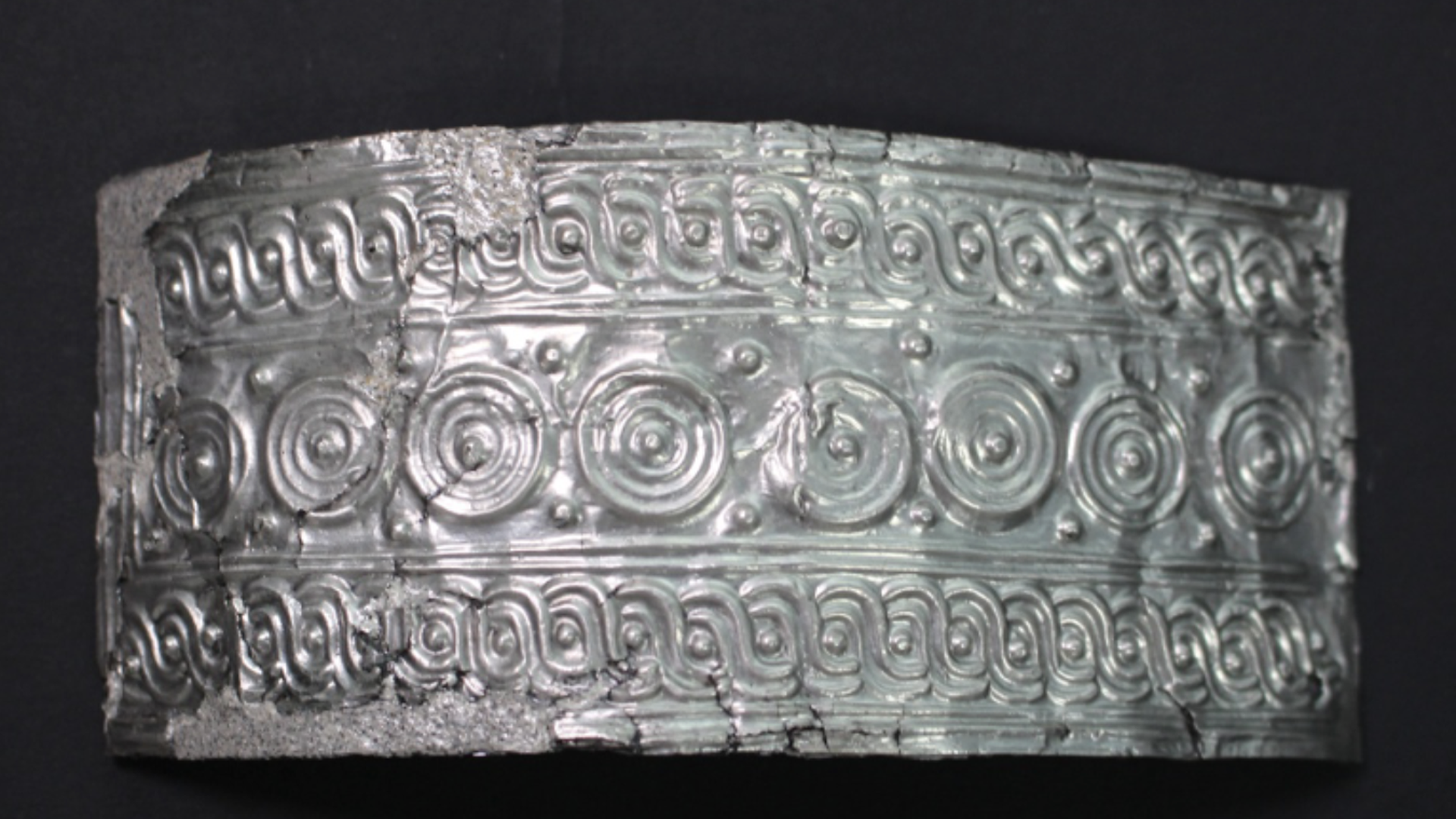
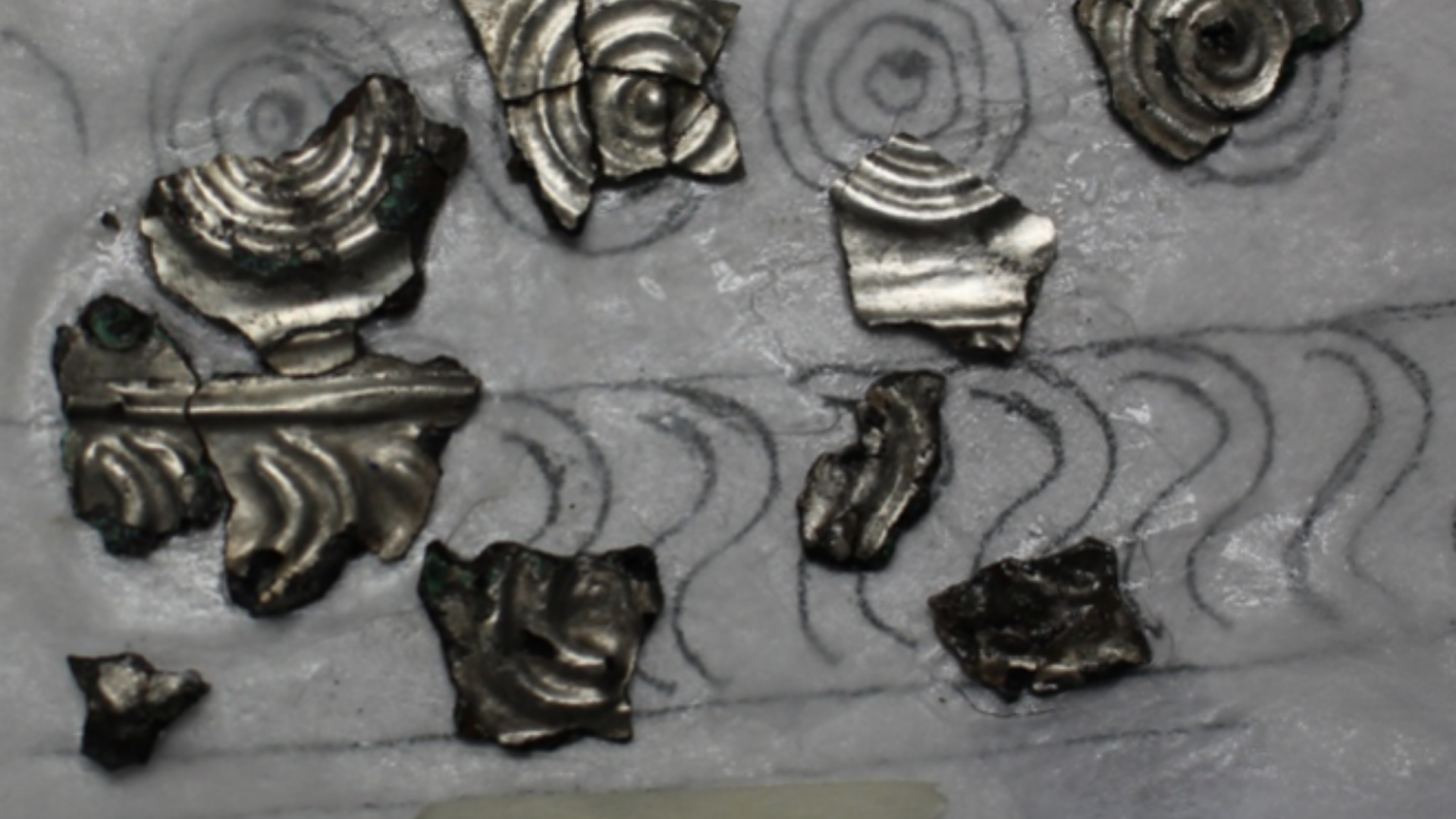
The restoration and reassembly of the many silver fragments was completed in December 2024. Plans are underway to reorganize the storage of the other restored fragments.
Silvers from the Regolini Galassi Tomb - Second Restoration Update
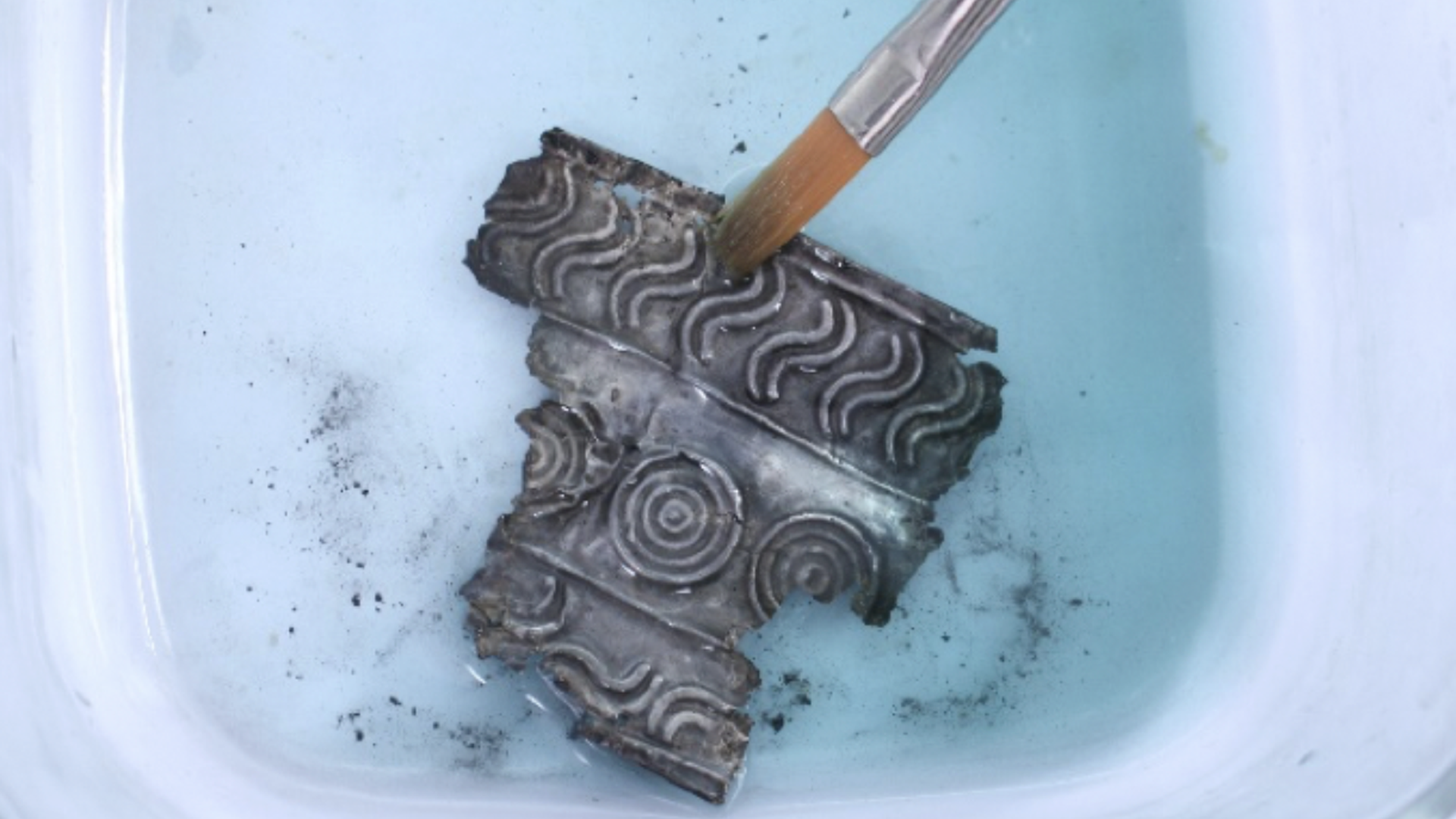
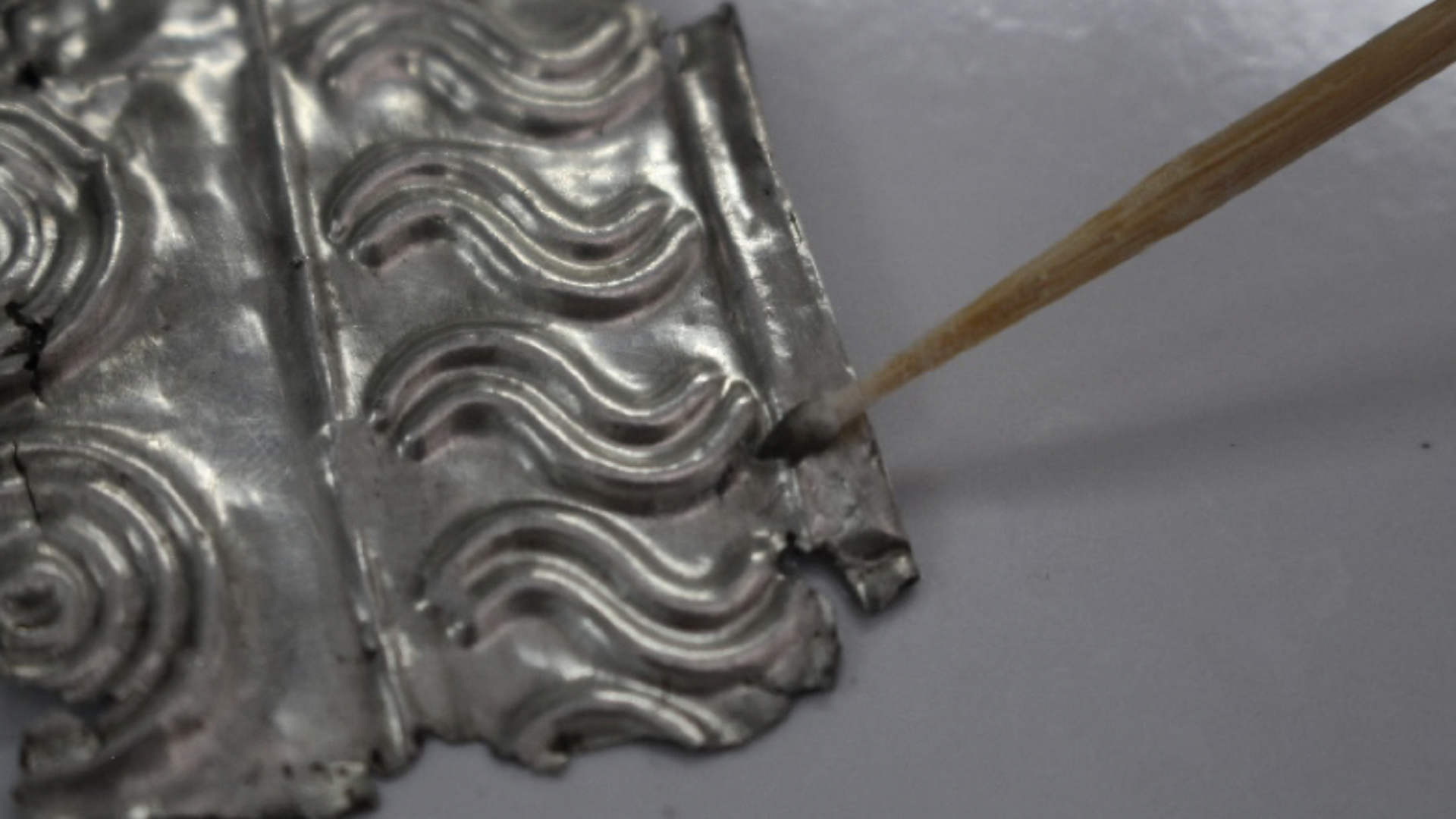
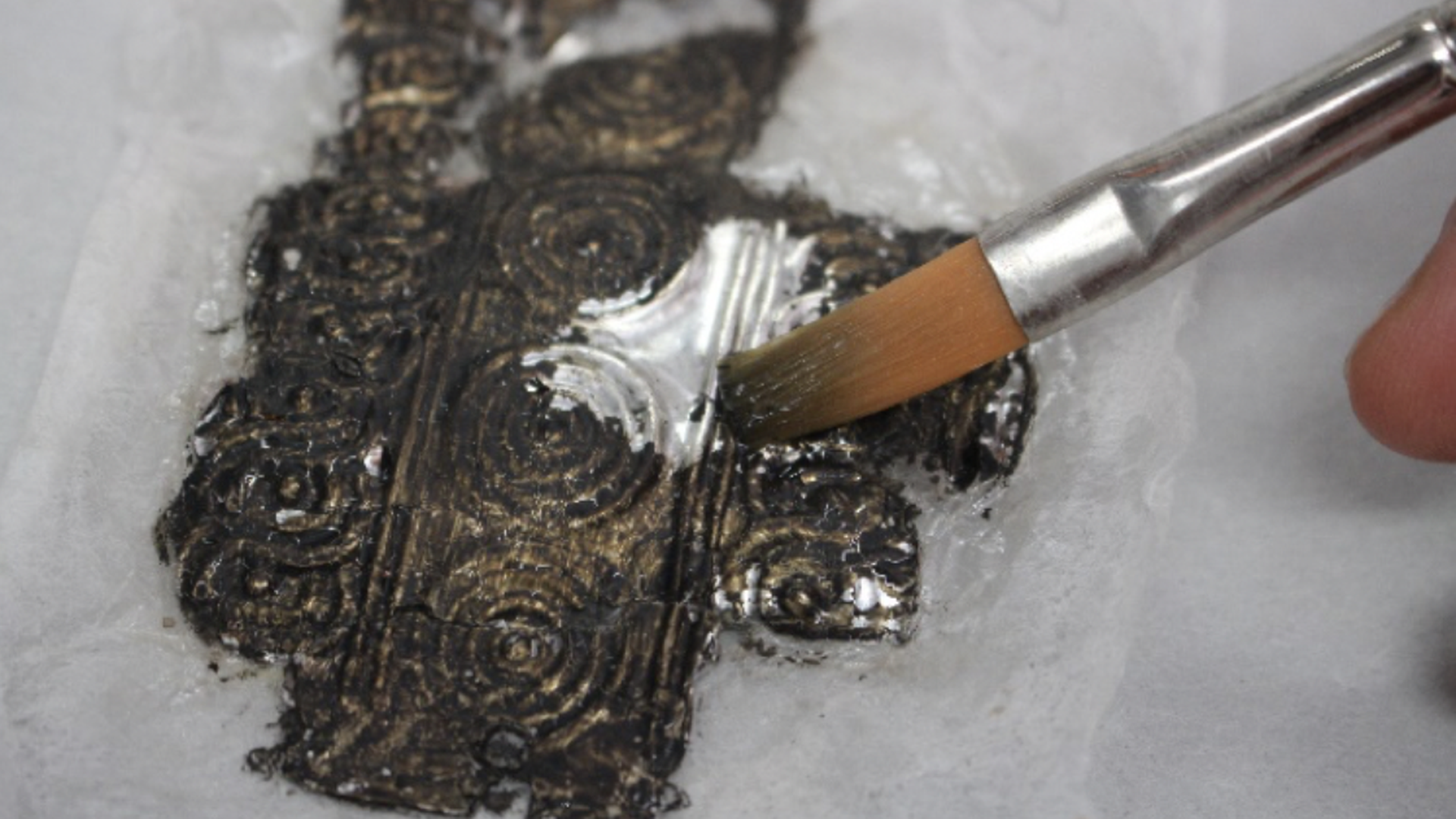
The silver bracelets are fragmentary and the embossed silver foil is fragile (between 50 and 100 microns, measured with a micrometer). t was, therefore, necessary to reinforce the bracelets by gluing a sheet of Japanese paper with reversible glue on the back.
The restorer cleaned the piece by immersing it in a chelating solution and, after a prolonged rinsing, completed it by rubbing it with tiny pads. Finally, the restorer applied a transparent reversible lacquer to protect the silver surface after drying.
Silvers from the Regolini Galassi Tomb - Restoration Update
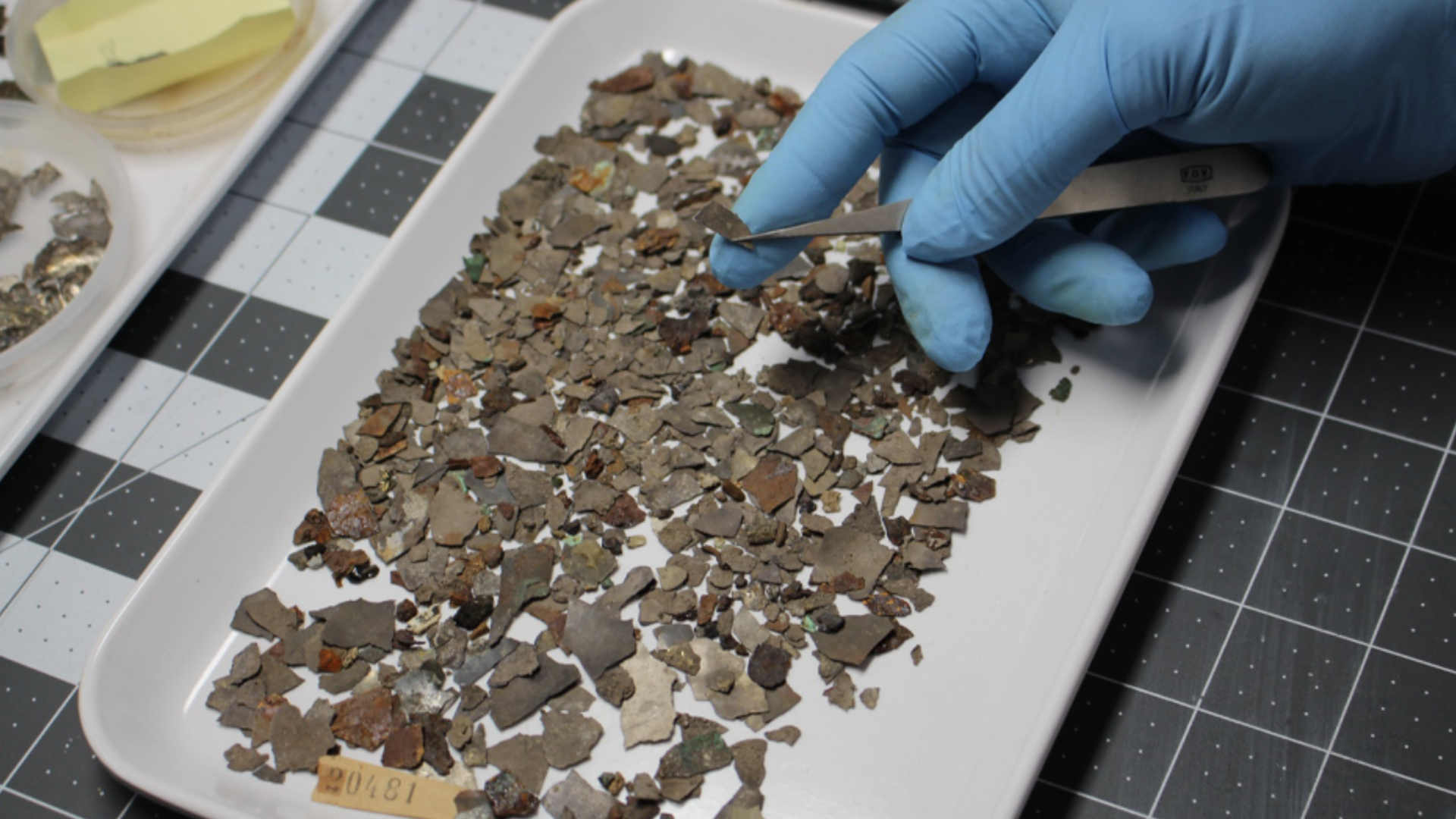
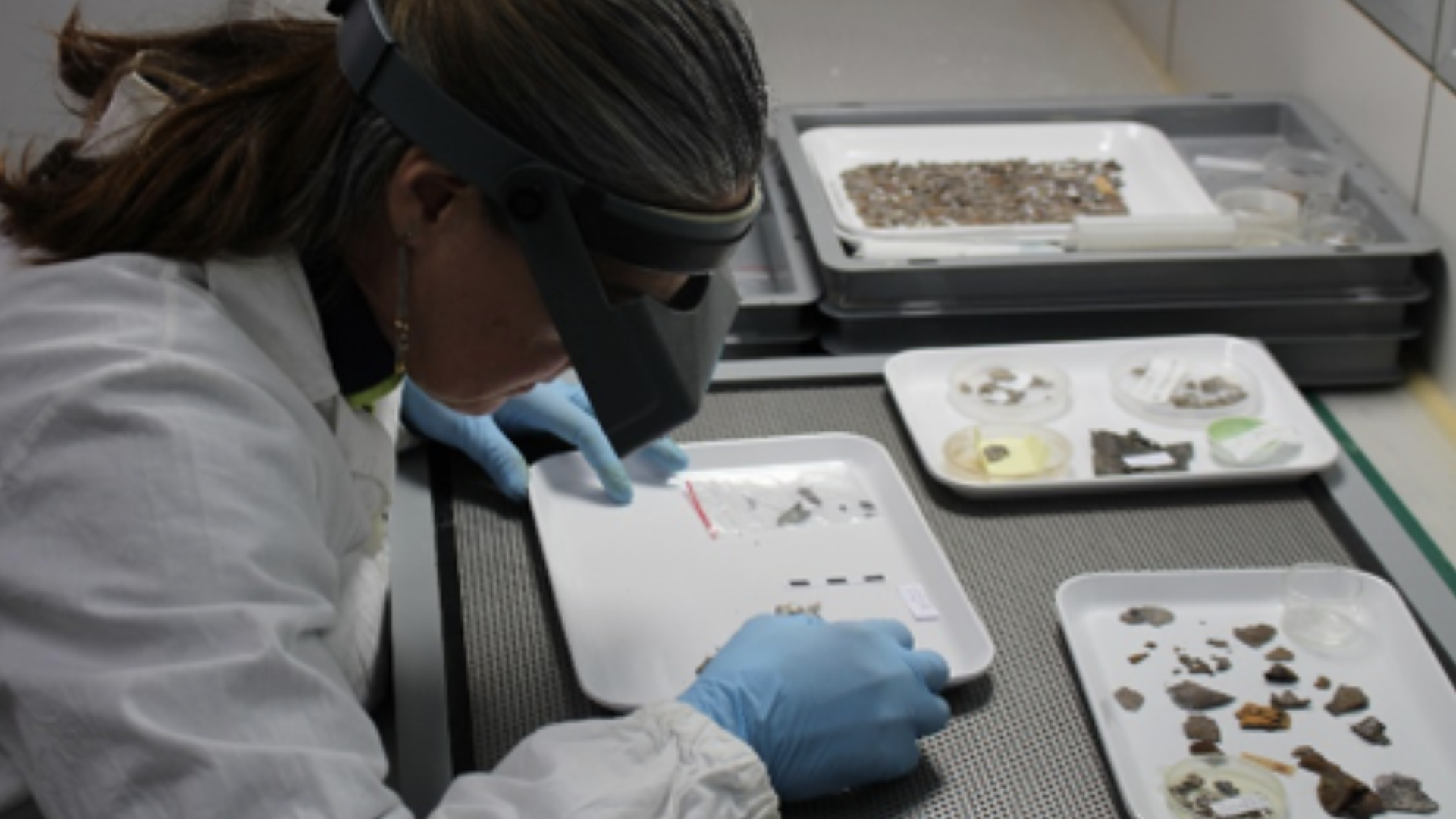
The fragments are very delicate and a long and careful study with magnifying glasses or a stereo microscope is necessary to identify the different pieces. They are divided into groups with similar embossing, thickness, or geometric shapes.
Identification and classification are difficult because all the fragments are covered with a heavy brownish layer of oxidation. The darkening is mainly due to silver and copper reacting with oxygen and air pollutants. A first selection of fragments is made using lenses.

Silvers from the Regolini Galassi Tomb
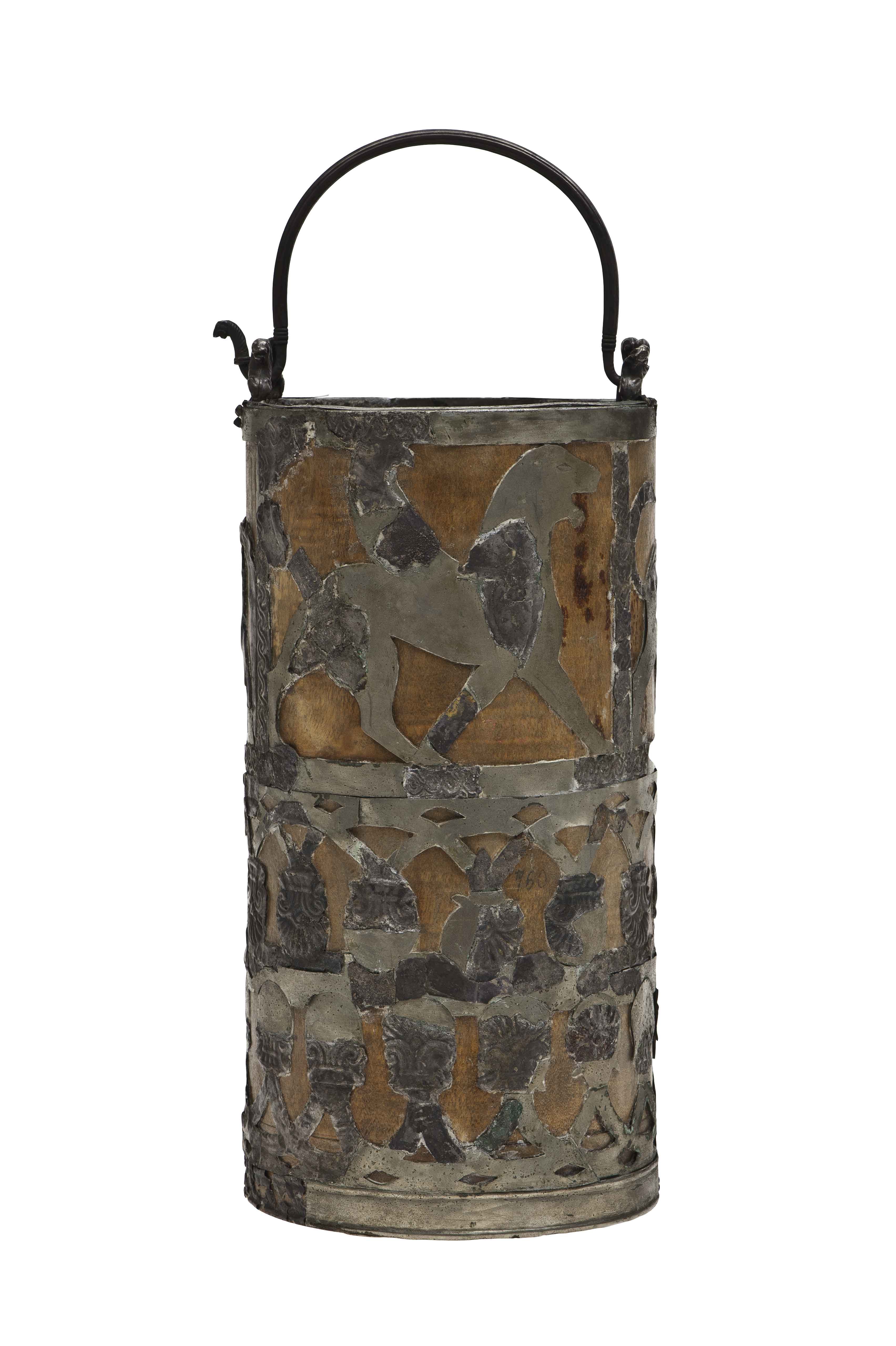
Details
Patrons: Hazelwood Family
Inventory: 20471, 22216, 22217, 22218, 22219, 22220, 22221, 20477, 20481, 20485, 20488, 20493
Artist: Unknown
Date: 675-650 B.C
Provenience: Cerveteri, Latium Region - Italy
Classification: Artifact
Materials: gilded silver, silver, silver foil
Dimensions: Various
Museum: Gregorian Etruscan Museum
Department: Etruscan - Italic Antiquities
Laboratory: Metals & Ceramics
Wishbook year: 2023
Description
HIGH PRIORITY PROJECT
In 1836 Archpriest Alessandro Regolini and General Vincenzo Galassi discovered one of the richest and most famously decorated Etruscan tombs. It is from the “Oriental’’ Period found in the Sorbo Necropolis of ancient Caere (today Cerveteri). The main burial area was for an interred woman with affluent clothing and fine jewelry. In addition to intact materials, countless fragments pertaining to silver vessels and ornaments were inside the tomb, and they have not undergone studies. The selection and restoration of these fragments will lead to the identification of new objects and the reassembly of at least a pair of silver foil bracelets embossed with geometric and abstract motifs.
TOTAL COST: € 23.182,26 ($ 22,658.34)
Restoration Procedures
-
Handling of the works
-
Photographic filming by the restorer of all phases of the work
-
Cleaning
-
Consolidation, search for attachments with other fragments kept in storage
-
Integrations, final protection
-
Design of new exhibition supports
Media

Silver Artwork
Restorations Update: Silvers from the Regolini Galassi Tomb - Final Restoration Report
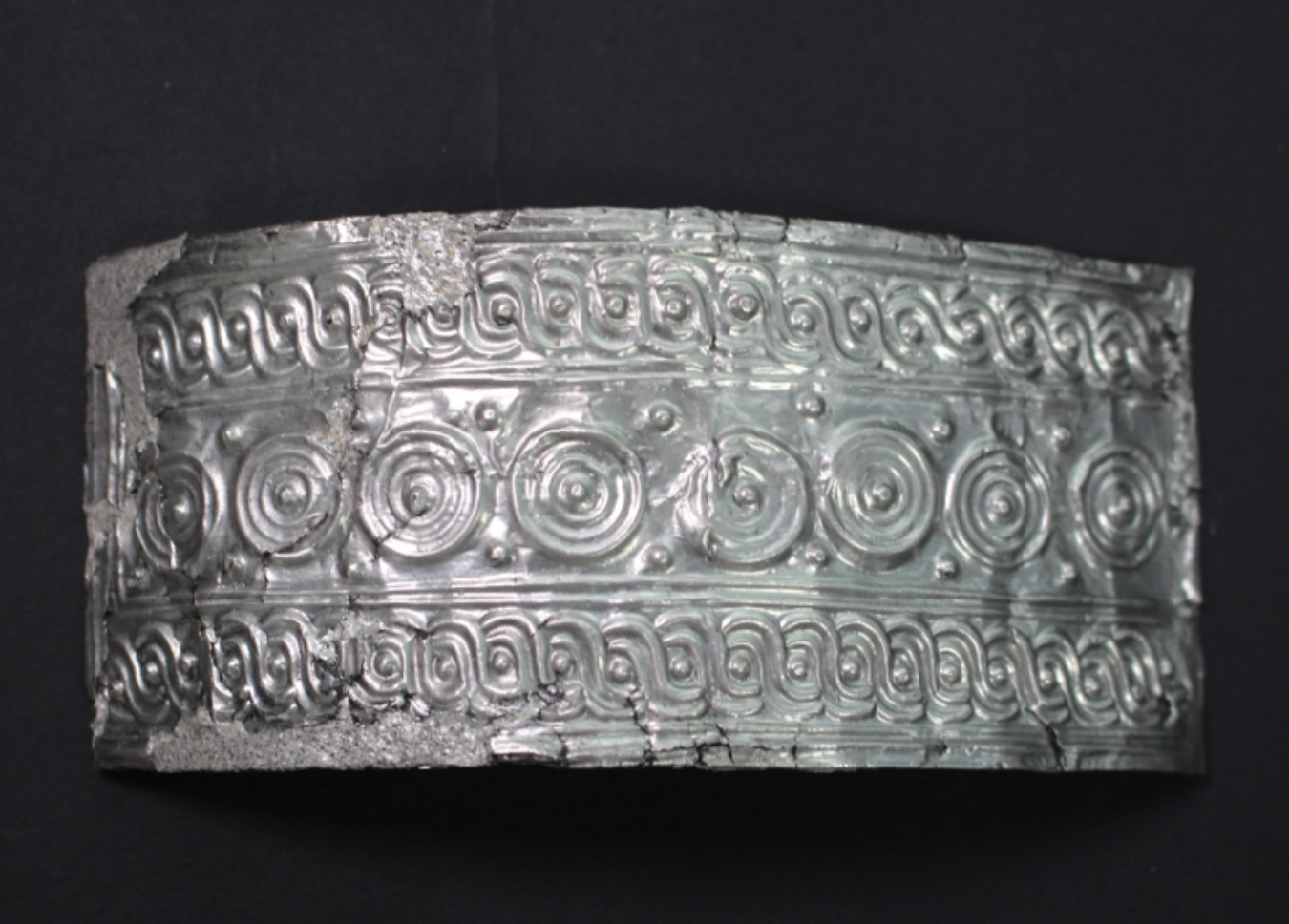
The restoration and reassembly of the many silver fragments was completed in December 2024. Plans are underway to reorganize the storage of the other restored fragments.
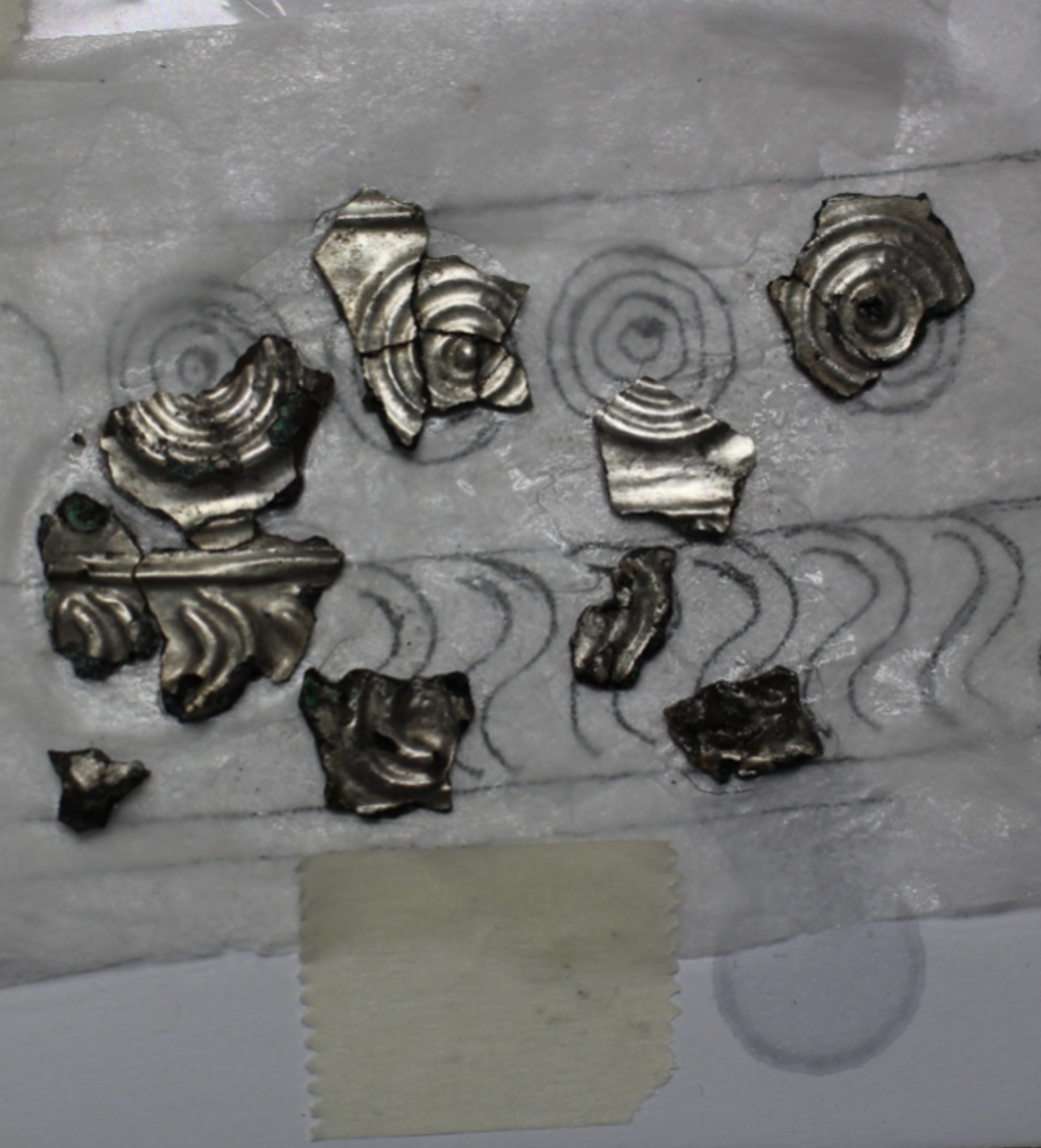
Restorations Update: Silvers from the Regolini Galassi Tomb - Second Restoration Update
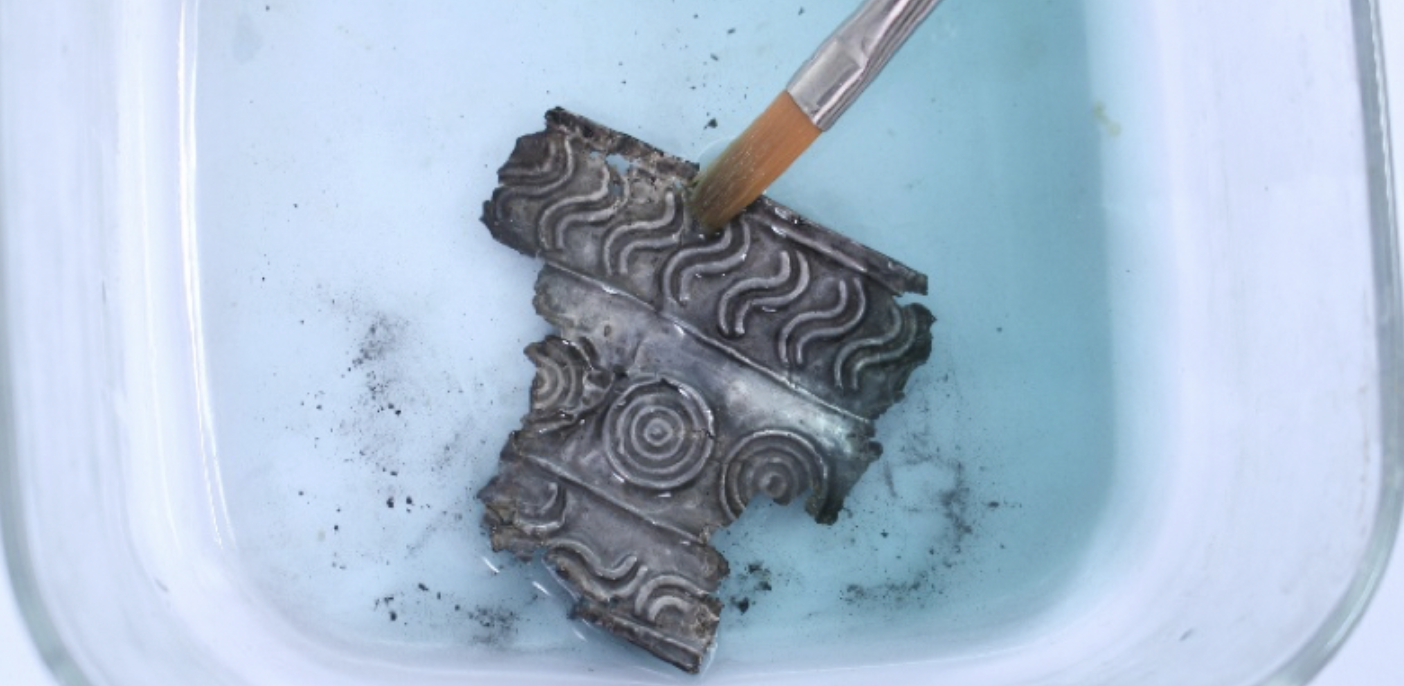
The silver bracelets are fragmentary and the embossed silver foil is fragile (between 50 and 100 microns, measured with a micrometer). t was, therefore, necessary to reinforce the bracelets by gluing a sheet of Japanese paper with reversible glue on the back.
The restorer cleaned the piece by immersing it in a chelating solution and, after a prolonged rinsing, completed it by rubbing it with tiny pads. Finally, the restorer applied a transparent reversible lacquer to protect the silver surface after drying.
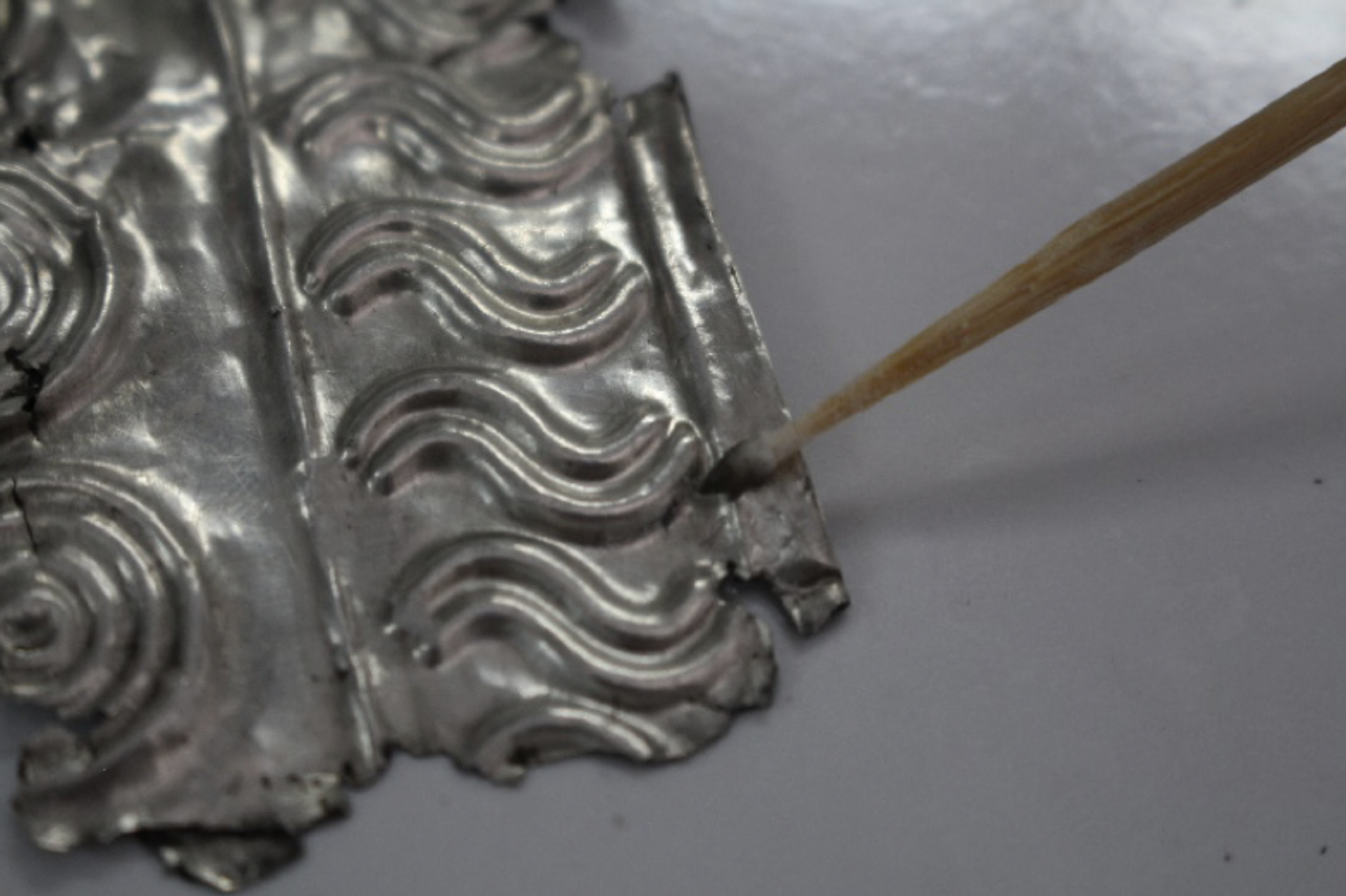
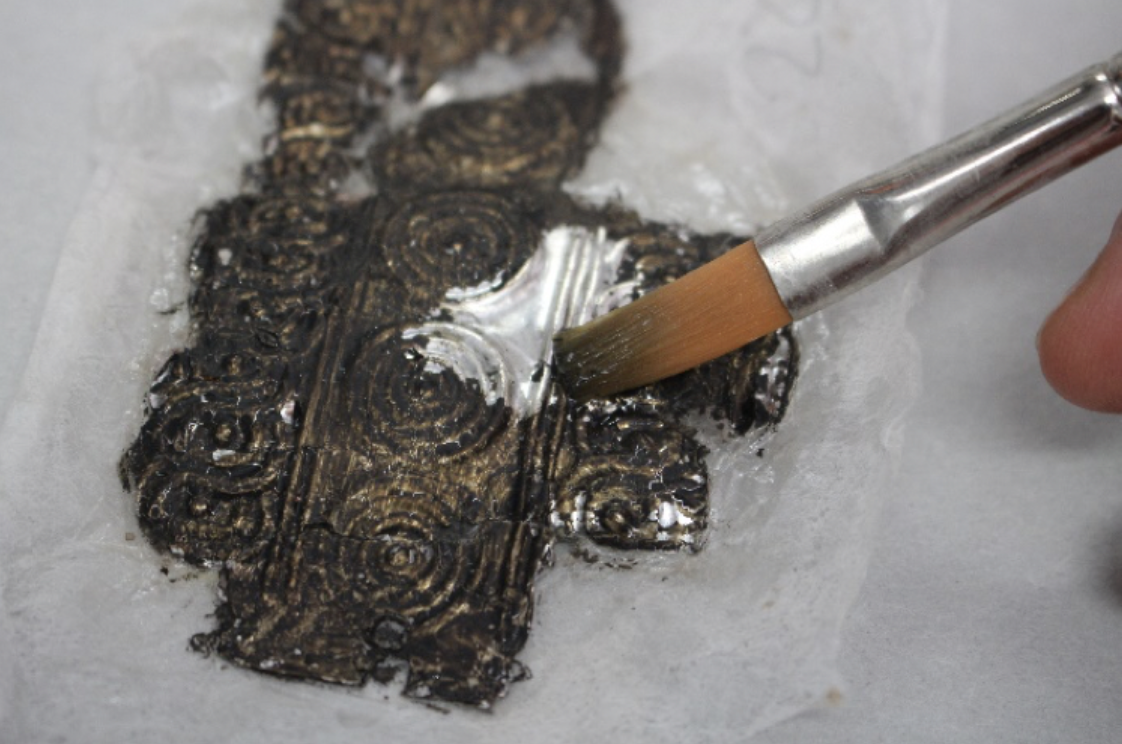
Restorations Update: Silvers from the Regolini Galassi Tomb - Restoration Update
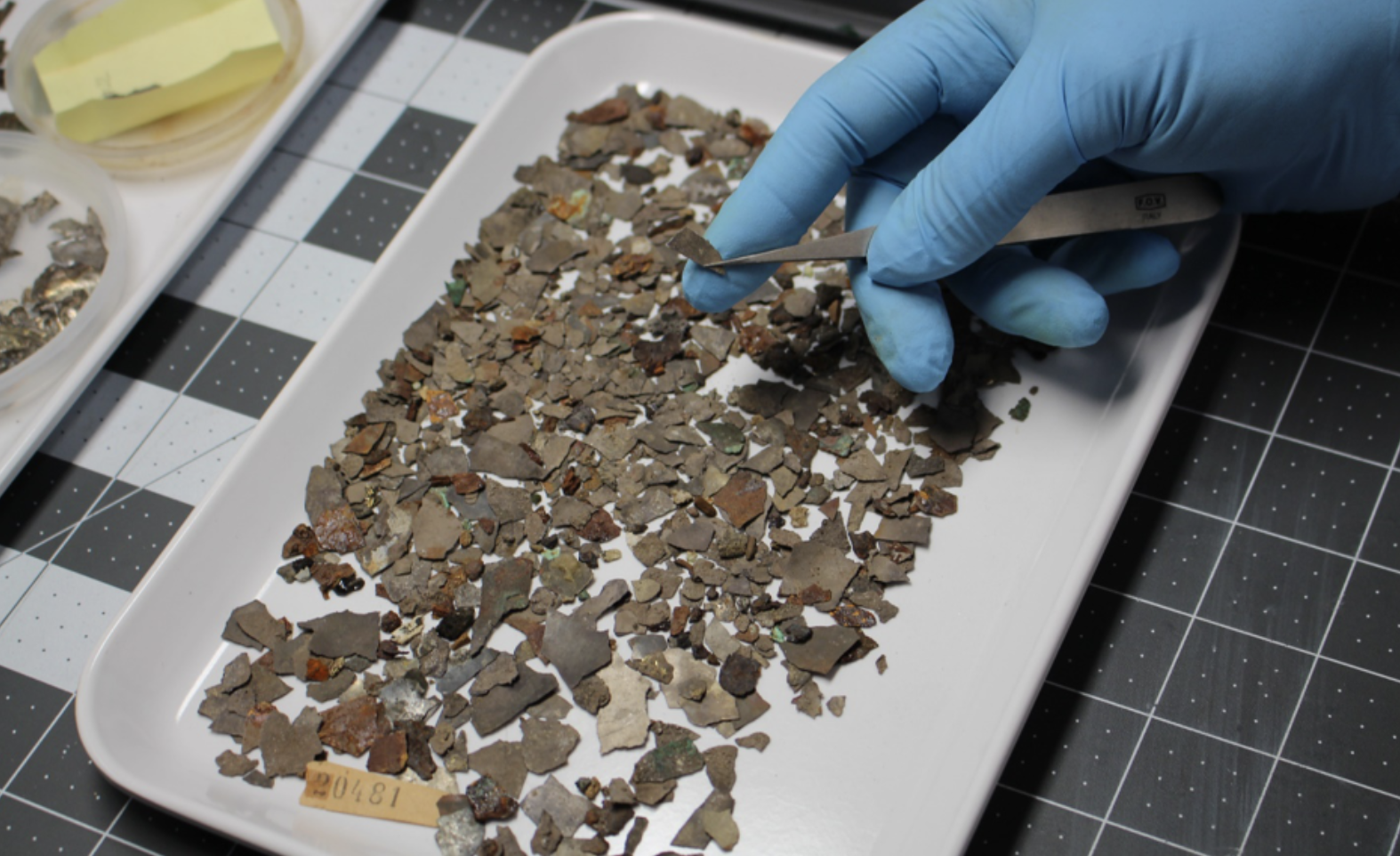
The fragments are very delicate and a long and careful study with magnifying glasses or a stereo microscope is necessary to identify the different pieces. They are divided into groups with similar embossing, thickness, or geometric shapes.
Identification and classification are difficult because all the fragments are covered with a heavy brownish layer of oxidation. The darkening is mainly due to silver and copper reacting with oxygen and air pollutants. A first selection of fragments is made using lenses.
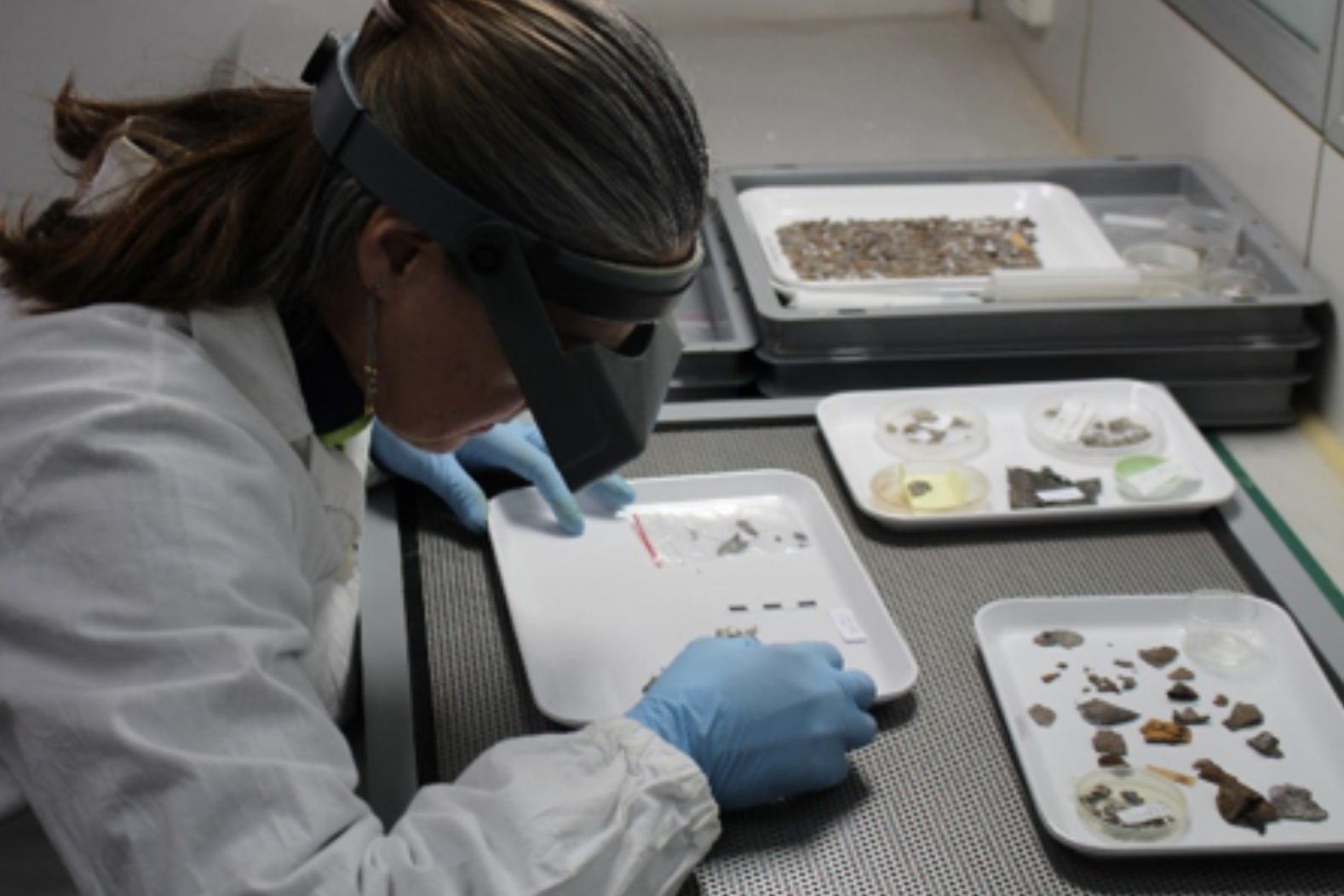

© 2025 Patrons of the Arts
in the Vatican Museums
Vatican Museums V-00120,
Vatican City State (Europe)
+39 0669864499
